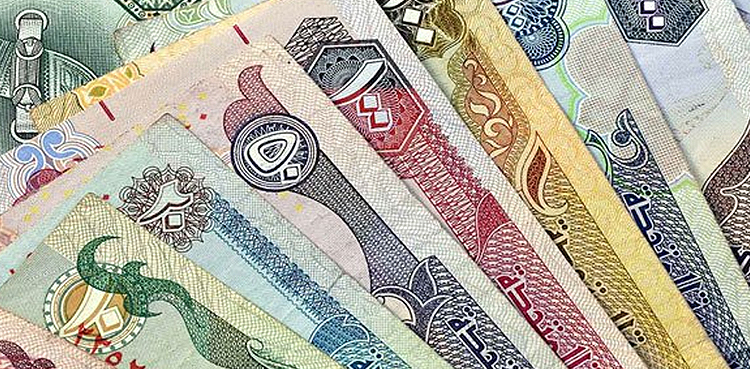
KARACHI, June 18, 2025 – The UAE Dirham (AED) strengthened against the Pakistani Rupee (PKR) today, trading at Rs77.14 in Pakistan’s open market, up from yesterday’s rate of Rs77.04. This marks a continuation of a stabilizing upward trend observed earlier this week, with the AED rising steadily from Rs76.44 to Rs76.96 over recent days, according to forex market data.
Valuation Dynamics
The appreciation of the UAE Dirham against the Pakistani Rupee is driven by a combination of regional demand, robust remittance inflows, and broader economic factors. The AED, pegged to the US Dollar at a fixed rate of approximately 3.67 AED/USD, benefits from the stability of the US Dollar and the UAE’s strong economic fundamentals. The Pakistani Rupee, operating under a managed float system, is more susceptible to domestic pressures such as inflation, trade deficits, and foreign exchange reserve fluctuations, often leading to volatility. The State Bank of Pakistan occasionally intervenes to stabilize the PKR, but open market rates largely reflect supply and demand dynamics.
Recent data highlights the significant role of remittances in this dynamic. In May 2025, overseas Pakistanis in the UAE sent $754.2 million in remittances, securing the UAE’s position as the second-largest source of remittances to Pakistan, behind Saudi Arabia. This influx bolsters Pakistan’s foreign exchange reserves, indirectly supporting the AED-PKR exchange rate stability. However, the PKR’s value is also influenced by Pakistan’s economic challenges, including high inflation and external debt obligations, which can weaken the currency relative to the AED.
Impact on Trade and Remittances
The strengthening of the AED against the PKR has significant implications for the economic relationship between Pakistan and the UAE. With over 1.7 million Pakistanis residing in the UAE, constituting one of the largest expatriate communities, remittances play a critical role in supporting Pakistan’s economy. A stronger Dirham means families in Pakistan receive more Rupees per Dirham sent, enhancing their purchasing power. Conversely, this trend increases the cost of imports from the UAE, particularly in sectors like food, clothing, and construction goods, which could impact Pakistani businesses and consumers.
Bilateral trade, already robust with the UAE as Pakistan’s third-largest trading partner after China and the United States, benefits from stable exchange rates, fostering confidence among investors and traders. However, experts caution that global factors, such as fluctuations in oil prices or geopolitical tensions, could indirectly affect the AED through its US Dollar peg, potentially introducing volatility to the AED-PKR rate in the long term.
UAE’s Economic Strength
The UAE’s economy continues to demonstrate remarkable resilience and growth, underpinning the Dirham’s stability. Bolstered by a diversified economic base, including tourism, real estate, and technology, alongside its traditional oil-driven wealth, the UAE remains a global financial hub. Strategic initiatives, such as investments in clean energy and fintech, further enhance its economic outlook. The Central Bank of the UAE’s prudent monetary policies, including maintaining the Dirham’s peg to the US Dollar, ensure minimal currency volatility, making the AED a reliable currency for international transactions. This economic stability not only supports the Dirham’s value but also reinforces the UAE’s role as a key partner for countries like Pakistan.
Introduction to AED and PKR
The UAE Dirham (AED), introduced in 1973, is the official currency of the United Arab Emirates, issued by the Central Bank of the UAE and subdivided into 100 fils. Pegged to the US Dollar, it is widely used across the Emirates, particularly in economic hubs like Dubai and Abu Dhabi, and is occasionally accepted in neighboring regions due to the UAE’s status as a trade hub. The Pakistani Rupee (PKR), symbolized as ₨, has been Pakistan’s currency since 1947, issued by the State Bank of Pakistan and divided into 100 paisa. Operating under a managed floating exchange rate, the PKR’s value is influenced by market forces and economic indicators, with periodic interventions by the State Bank to curb volatility.
This steady rise in the AED-PKR exchange rate underscores the UAE’s economic strength and the deep financial ties between the two nations, with remittances and trade continuing to shape their economic partnership.




